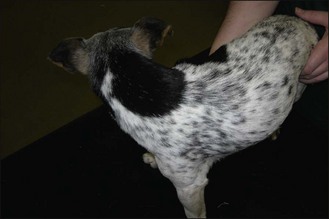54 Posture – an introduction
Posture is a description of the relative placement, arrangement, or position of the animal’s head, body and limbs with respect to gravity. The term attitude refers to the position of the eyes, head and limbs relative to the body. Some authors have used ‘attitude’ as a synonym for mental activity or behaviour. As all abnormal postures should be described in the course of an examination, this point of terminology is not hugely important.
Posture is described by
• Direction: to the left, to the right, ventrally, dorsally. The direction is ALWAYS given from the animal’s perspective NOT the viewer’s. ‘To the left’ refers to the animal’s left side. When taking the history be sure that the owner is describing the abnormality in this manner
DESCRIPTION OF ABNORMAL POSTURE
Head
• Tilt: one ear is closer to the ground than the other, e.g. a right head tilt has the right ear closer to the ground.
• Turn: the head is level with the nose pointing caudally, turning as if to look behind. ‘A left head turn’, or ‘the head turns to the left’ describes the nose pointing to the left side of the animal (see also Fig. 54.1).
• Head pressing (obstinate progression): animals push themselves forward until they meet an obstacle then continue to push against it. It is a sign of cerebral disease.
Stay updated, free articles. Join our Telegram channel

Full access? Get Clinical Tree



